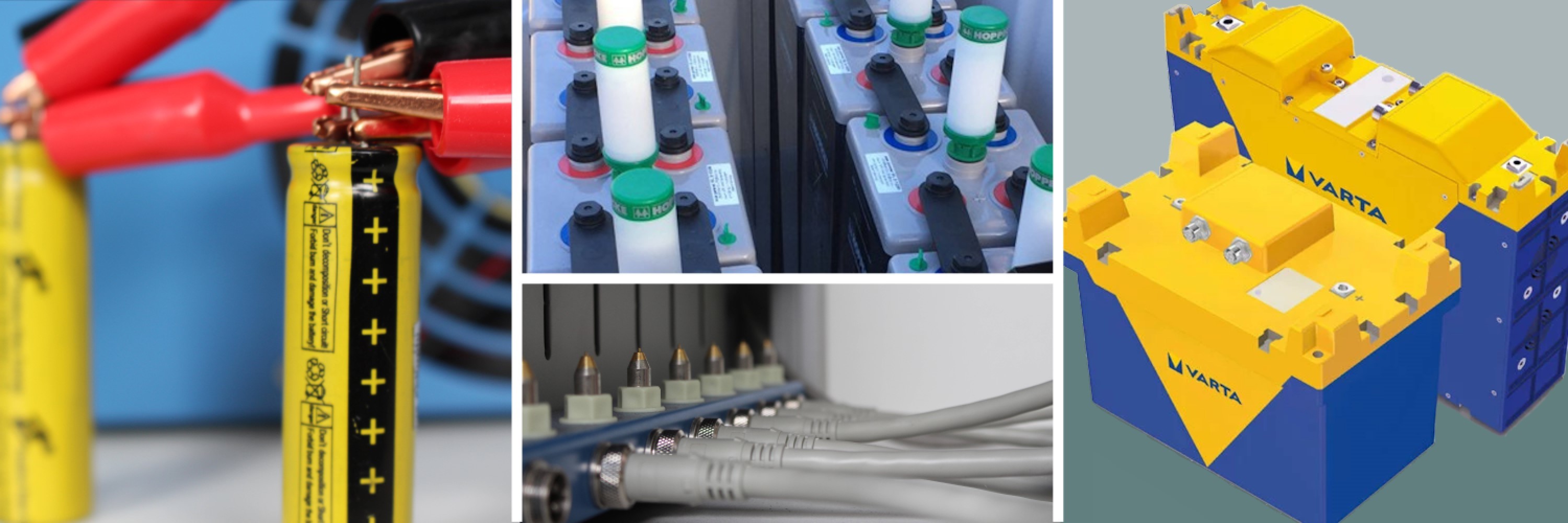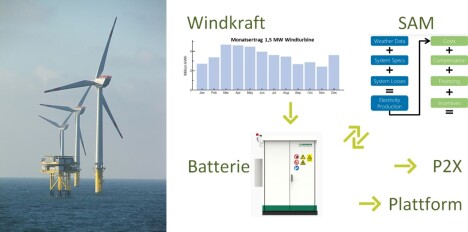
| Period: | 01.04.2021 – 31.12.2025 |
|---|---|
| Partners in WP3.2: |
EnBW Energie Baden-Württemberg AG Northland Power Siemens Gamesa Renewable Energy GmbH & Co. KG |
| Associated partner: | WindMW Service GmbH |
| Funding: |
Federal Ministry of Education and Research Grant No. 03HY302E |
| Project manager: | Willi Peters |
| Division: | Chemical Technology |
| Team: | Energy Storage and Conversion |
Motivation
The direct connection of power-to-X processes (PtX) to offshore wind turbines might contribute to extension of decentral energy economy. Through water electrolysis, PtX can generate “green” hydrogen, which is a basic feedstock for the synthesis of chemicals and fuels such as methane, ammonia, methanol and other synthetic hydrocarbons. These fuels offer the additional advantage of easy storage, leading to the vital decoupling of energy supply from highly fluctuating wind and solar power generation.
State of the art
PtX-processes have been developed in numerous R&D projects. Their technological readiness level (TRL) ranges from pilot plants (TRL4) to plants at industrial scale (TRL 8/9). In most cases container-sized plants have been constructed and tested with the main objective of PtX technology demonstration. Thus far, PtX processes have not been integrated into the whole industrial process chain so that optimization of material and thermal overall efficiency is mostly limited to a simulation approach. Furthermore, feasibility of their integration into offshore wind parks has not been studied in Germany, yet. Similar to the H2-Mare concept, the danish government plans to finance a huge project based on the construction of an artificial island that acts as power hub for the gathering of electricity from the surrounding 200 offshore wind turbines in a first step. Later, up to 10 GW should be supplied to the European energy grid. Furthermore, a second hub should be constructed on Borholm island to produce green synthetic fuels for aviation and shipping applications from PtX processes.[1].
Project goals and DFI work packages
The main objectives of the project “PtX-Wind – Offshore Power-to-X-Prozesse “ with 17 partners within flagship project H2Mare is to develop and operate an experimental PtX platform as well as to design and layout a research platform. These results will serve as basis for the construction and operation of an offshore production platform in the future.
The task of ESC team at DFI focuses on dimensioning a battery storage system for the research platform, as part of work package 3.2 “Strombezug (energy supply)”. Generally, the electrochemical unit should act as a buffer in between wind power and PtX-platform to allow for the off-grid operation of the latter. Furthermore, the unit should supply energy to vital instruments of platform and PtX plant in case of wind calm and system failures. The dimensioning of battery storage unit capacity will consider not only economical but also technical aspects such as available space, operation safety, response time and battery life. Real power generation profiles of wind turbines will help to adapt the energy storage unit to the energetical requirements of the platform and PtX plant.
To identify suitable storage technologies, ESC team will test commercially available batteries such as NMC, LFP, LTO as well NiMH, lead-acid & supercapacitors. Performance testing will take place at cell and module level up to 1 kWh using specific load patterns. At the second step, relevant battery properties will be implemented into the design software “System Advisor Model (SAM)”, as published by NREL, and combined with a year-round wind power generation profile. Based on different scenarios regarding the energy requirements of platform and PtX plant, a first assessment of the technical and economical properties of the battery storage unit will be provided.
 Figure 1: The electrochemical storage system acts as buffer in between wind turbine and PtX-platform and supplies energy to vital platform and PtX plant devices in case of wind calm or system failure. System advisor model (SAM) will be used for designing size and capacity of the energy storage unit.
Figure 1: The electrochemical storage system acts as buffer in between wind turbine and PtX-platform and supplies energy to vital platform and PtX plant devices in case of wind calm or system failure. System advisor model (SAM) will be used for designing size and capacity of the energy storage unit.
Literaturquellen:
[1] https://www.handelszeitung.ch/tech/28-milliarden-euro-danemark-plant-eine-kunstliche-insel-fur-windenergie
back
BMBF Grant No. 03HY302E